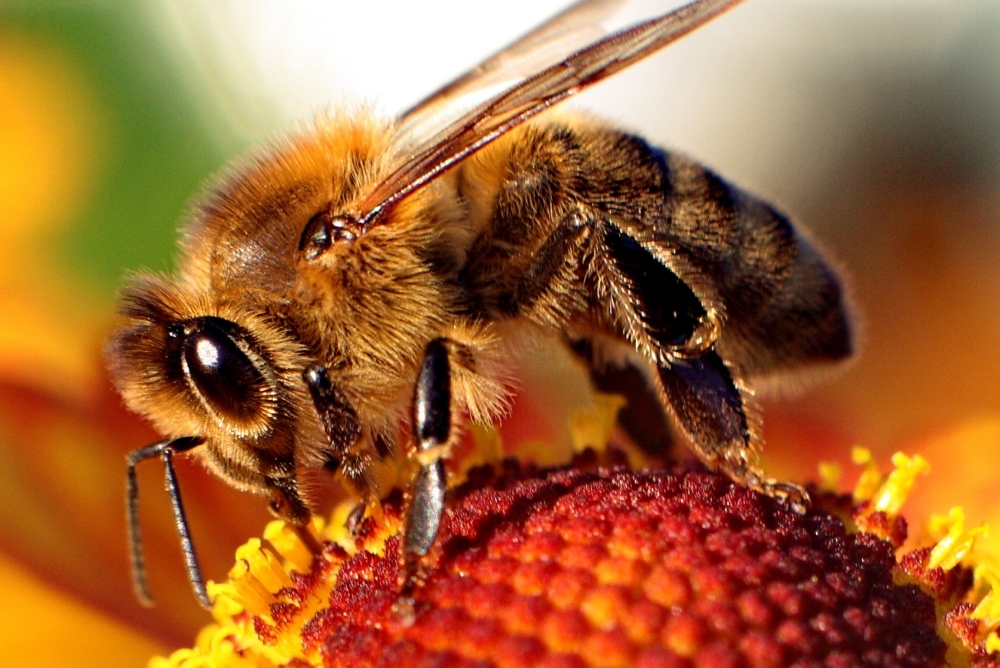
She is the author of My Husband and Other Animals.…
Animals do the most amazing things. Read about them here in this series by Janaki Lenin.

Insects lack antibodies, but they somehow immunise their offspring. Scientists from Arizona State University, U.S., University of Jyväskylä and University of Helsinki, Finland, and Norwegian University of Life Sciences, Norway, have finally cracked the mystery of how queen bees vaccinate their offspring against diseases.
The human body produces huge quantities of antibodies when it is under attack from bacteria, viruses, or any other foreign organisms or toxins. Produced by blood, these proteins stick to the invaders and aid their destruction. This is our primary defence mechanism. If insects didn’t have this life-saving method, how do they survive disease?
In recent years, scientists discovered insects were able to grant protection to their offspring. When they injected fragments of bacteria into adult female mealworm beetles, red flour beetles, and cabbage leaf hoppers, their progeny had immunity to the pathogen. When bacteria that caused the dreaded American foulbrood disease was injected into honey bees, the young had higher resistance to the infection. The question was – how do these insects develop immunity without antibodies?
Scientists led by Dalial Freitak, a postdoctoral researcher at the University of Helsinki say the key is vitellogenin, a protein found in egg yolk. It performs the role of antibodies by binding itself with molecules of pathogens and getting transferred to the egg. It thus confers protection to the young.
Freitak told The Wire she met Heli Salmela at a group meeting in Helsinki University. Salmela was working on vitellogenin for her doctoral thesis. “She presented her data on the capacity of vitellogenin to bind to bacterial pieces. I knew that vitellogenin is an egg yolk protein and transferred to eggs in huge amounts. Heli’s presentation gave me the idea that it must be vitellogenin,” she says. “We sat down with Heli and designed the experiment.”
“We brainstormed together until we were so excited, we had to run to the lab to test our hypotheses,” says Heli Salmela.
The three researchers, Heli Salmela, Gro Amdam, and Dalial Freitak, introduced fluorescent fragments of E.coli to the ovaries of queen bees. When they saw the protein vitellogenin transfer the bacterial fragments into the developing eggs, they grew excited.
Freitak says, “I felt like I had won the lottery! I don’t think I have ever been as happy as when I saw the images of ovaries, full with fluorescent bacterial pieces in the vitellogenin treatment. We danced in the lab with Heli.”
“The process by which bees transfer immunity to their babies was a big mystery until now. What we found is that it’s as simple as eating,” says Gro Amdam, a professor with Arizona State University’s School of Life Sciences and another author of the paper, in a press release. “Our amazing discovery was made possible because of 15 years of basic research on vitellogenin.”
Queen bees rarely if ever leave the hive. Hard-working worker bees range far and wide to gather pollen and nectar. While they go about their business, they also pick up germs. Back at the hive, they use the pollen to create royal jelly to feed the queen. Some of the microbes the workers picked up from the outside contaminate the jelly and find their way into the queen’s gut.

They get digested and stored in the fat. Pieces of the bacteria bound to vitellogenin are carried by blood to the developing eggs. And so the bee babies are born vaccinated and ready to fight diseases in their environment.
While bees can naturally vaccinate their brood from some diseases, other diseases, such as American foulbrood, are deadly. Spores of the bacteria spread quickly through hives and wipe out entire colonies.
Around the world, honey bee populations have catastrophically declined. Pesticides, pests, and germs are suspected, but no one knows for certain. While there’s no data on Indian bees, they haven’t escaped unscathed. Researchers in Kerala found a dramatic decrease in rock bee colonies in 2014.
More than providing honey, bees and other pollinating insects are crucial for agriculture, pollinating fruit and nut trees and vegetable crops. The UN’s Food and Agriculture Organisation estimates that 90% of food in 146 countries is supplied by more than 100 crop species. Of these, 71 are bee-pollinated, and a number of others are fertilised by other insects.
Now that the researchers have figured out how to protect insects, they can develop an edible vaccine and feed it to them.
“We are patenting a way to produce a harmless vaccine, as well as how to cultivate the vaccines and introduce them to bee hives through a cocktail the bees would eat. They would then be able to stave off disease,” says Freitak.
This would not only shore up honey bee immunity, but also reduce the threat to human food security. Freitak says vitellogenin immunises the next generation, and also the queen bees to those particular diseases.
The paper, ‘Transfer of Immunity from Mother to Offspring Is Mediated via Egg-Yolk Protein Vitellogenin‘, was published in PLOS Pathogens on 31 July 2015.
Janaki Lenin is the author of My Husband and Other Animals. She lives in a forest with snake-man Rom Whitaker and tweets at @janakilenin.

